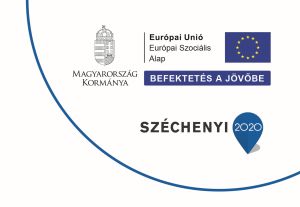Fabó, Edit (2025) A dualizmus környezetkultúrája. Az ember és a környezet viszonya a Vasárnapi Ujság polgári életérzésében In: Környezet és társadalom. Budapest-Eger, Hajnal István Kör – Társadalomtörténeti Egyesület – Líceum Kiadó. pp. 407-430.
|
pdf
407_fabó.pdf Download (17MB) [error in script] |
Absztrakt (kivonat)
The Environmental Culture of Dualism. The Relationship between Man and the Environment in the Bourgeois Sense of Life of the Vasárnapi Ujság ---- Half decade after the 1848 revolution, the first issue of the Vasárnapi Ujság (Sunday News) was published. Following the English model, the founders wanted to publish a journal that would not only provide interesting news, but also entertainment, so that literary works, works of art, scientific discoveries, inventions and modern ideas would become part of the general education of the bourgeoisie. The editors have endeavored to do this through high-quality texts and images. The newspaper became a popular and successful publication, lasting for almost seven decades. The Vasárnapi Ujság is still regarded by the literary historians as the authoritative press of the bourgeois society. This paper will focus on some of the most important occasions in the history of the relationship between man and the environment, mainly through the illustrations of the magazine. The most devastating disaster of the greatest modernization efforts of dualism, river regulation, was the 1879 Szeged flood, which the weekly newspaper published graphic accounts of – a testament to the power of nature. The tragedy was followed by a major international aid effort, in which the French initiative played a key role, and a celebration was held on the Margaret Island in Budapest in late summer 1879 to mark the occasion. The atmosphere of the event’s wild and romantic setting was also reported by the Vasárnapi Ujság. The reconstruction of Szeged is one of the success stories of the era, the motto of which is attributed to King Franz Joseph: “Szeged was not, but it will be!” The city-building program tested the strength of the country, but it also revealed the potential and capacity of crafts, industry, and other economic sectors. In 1885, a very spectacular national exhibition was held in the City Park of Budapest to represent the general progress. The natural environment of the exhibition’s public park setting was also presented to the readers of the weekly newspaper. Every autumn, the King held nationwide military exercises in different parts of the Monarchy, and visited Kolozsvár (today Cluj, Romania) and its surroundings twice, in 1887 and 1895. On the latter occasion, the Vasárnapi Ujság gave a detailed overview of the region. These occasions are also characterized by the condensation of human experiences? in relation to the built and natural environment in the most complete possible social cross-section, in which the most diverse strata are represented simultaneously. The imagery of the reports on events of great interest also evokes the bourgeois atmosphere that characterized the weekly
| Mű típusa: | Könyvrészlet - Book section |
|---|---|
| Szerző: | Szerző neve Email MTMT azonosító ORCID azonosító Közreműködés Fabó, Edit NEM RÉSZLETEZETT NEM RÉSZLETEZETT NEM RÉSZLETEZETT Szerző |
| Kapcsolódó URL-ek: | |
| Nyelv: | magyar |
| Felhasználó: | Tibor Gál |
| Dátum: | 19 Aug 2025 13:33 |
| Utolsó módosítás: | 19 Aug 2025 13:33 |
| URI: | http://publikacio.uni-eszterhazy.hu/id/eprint/8740 |
 |
Tétel nézet |

